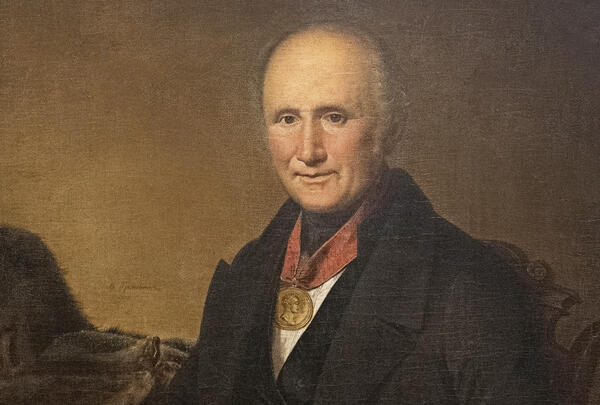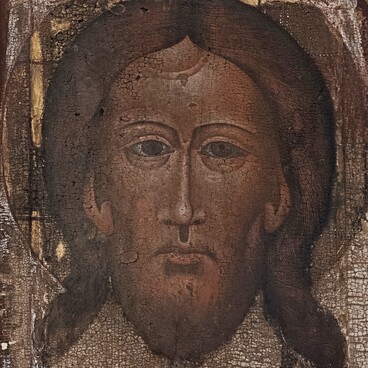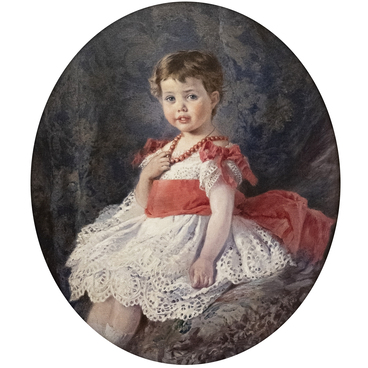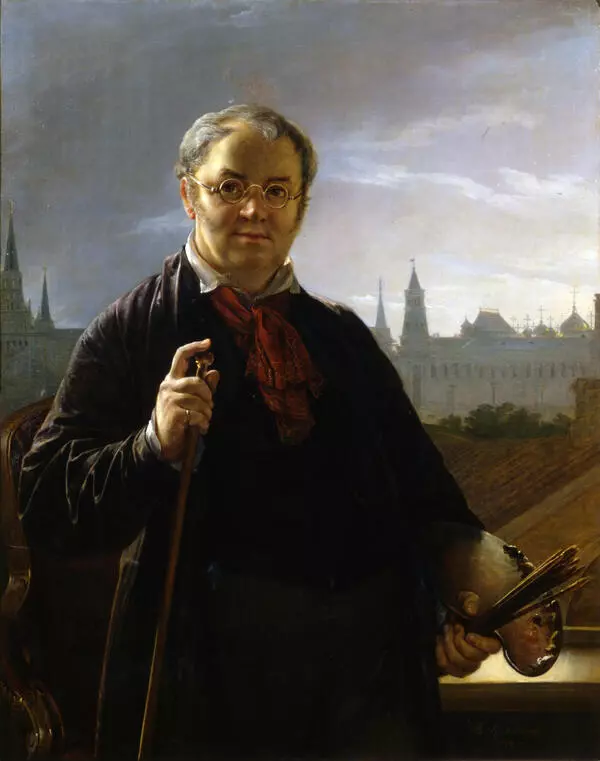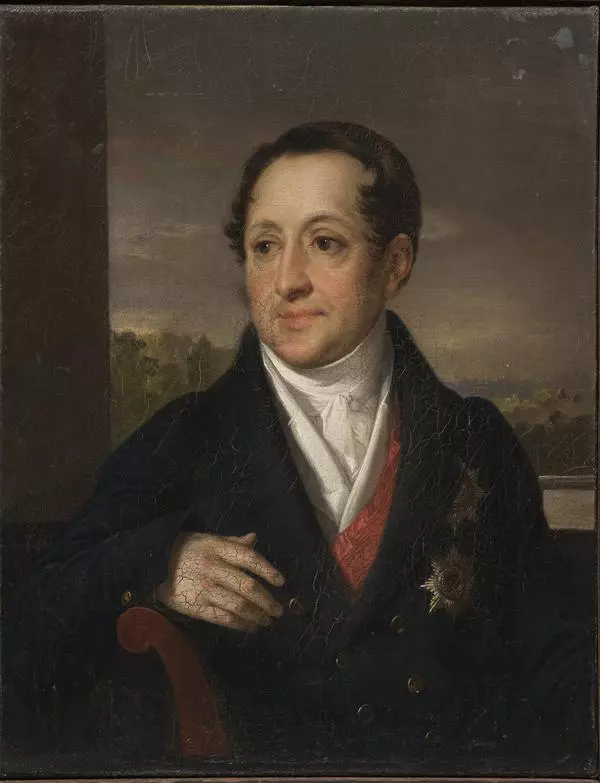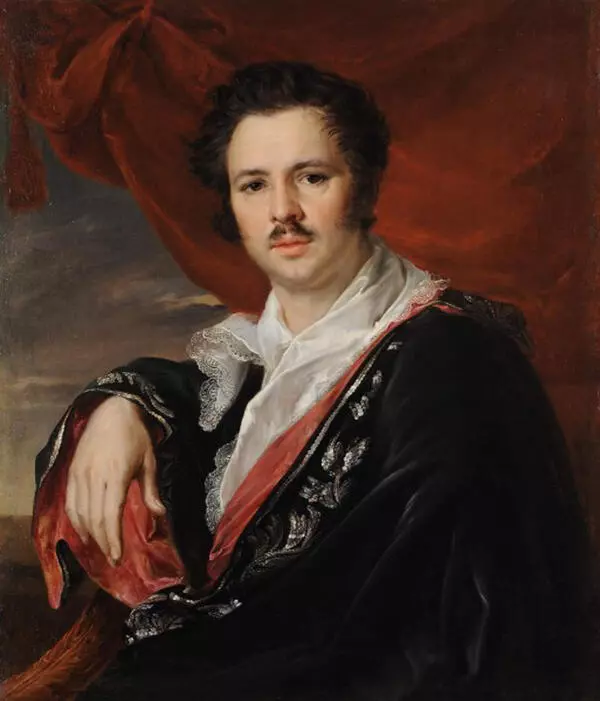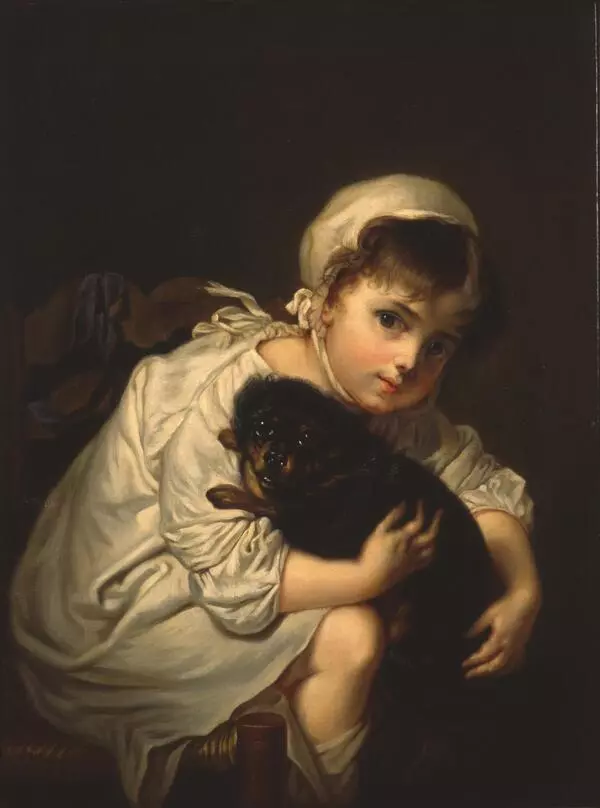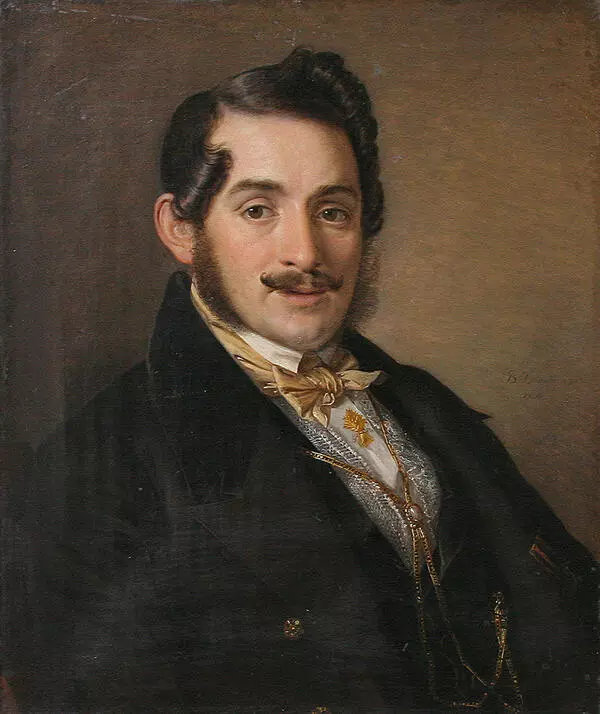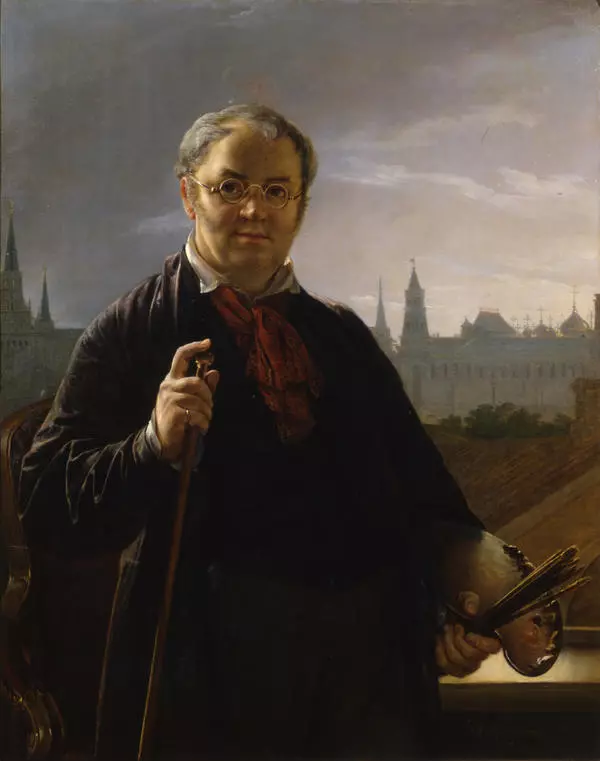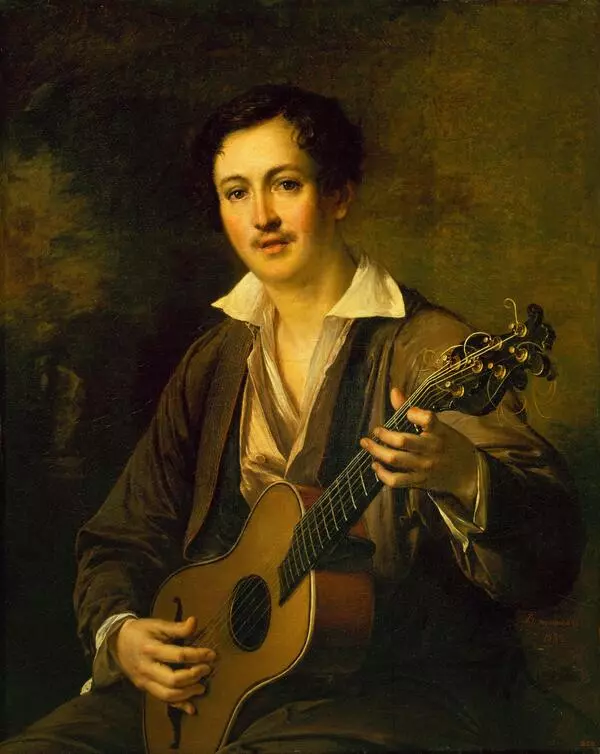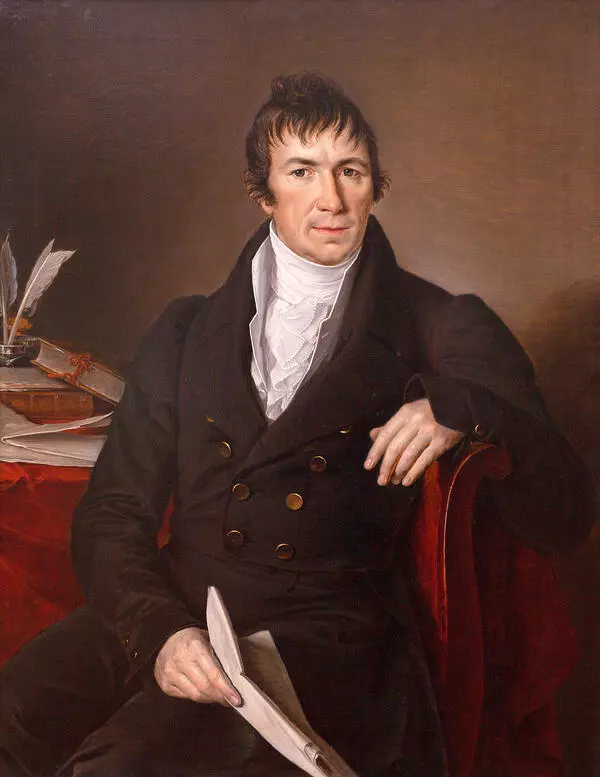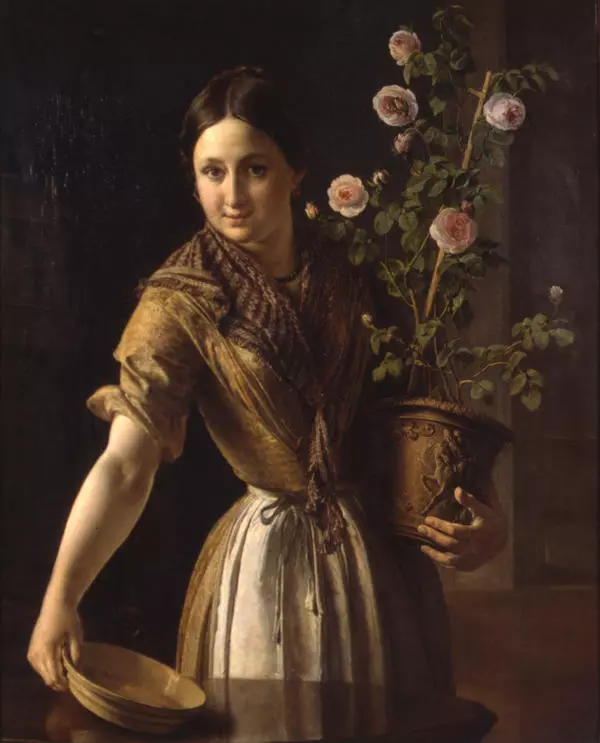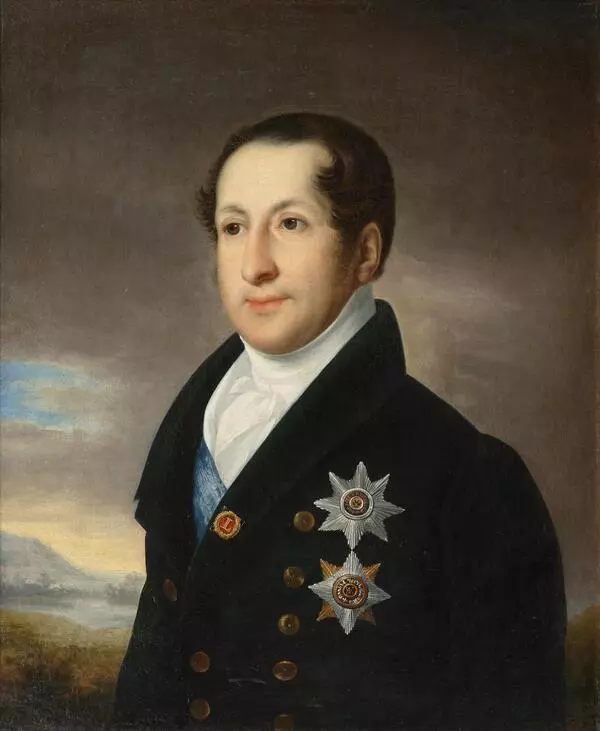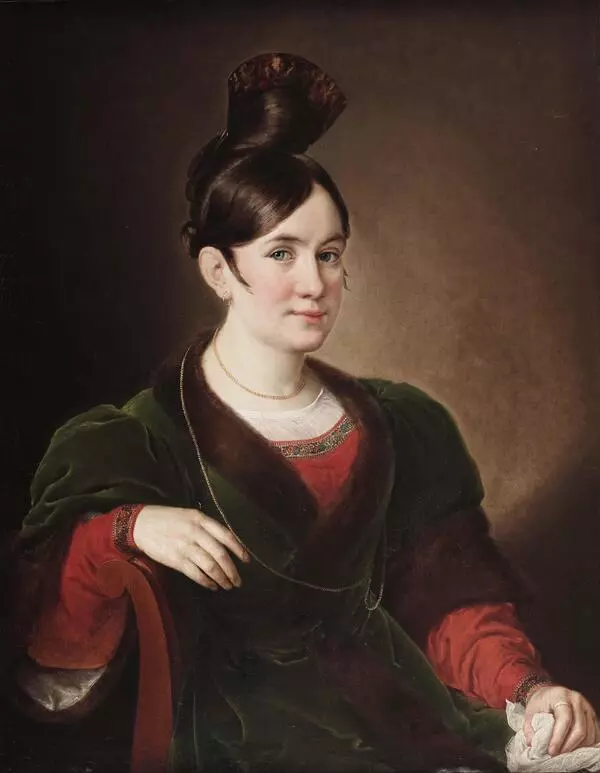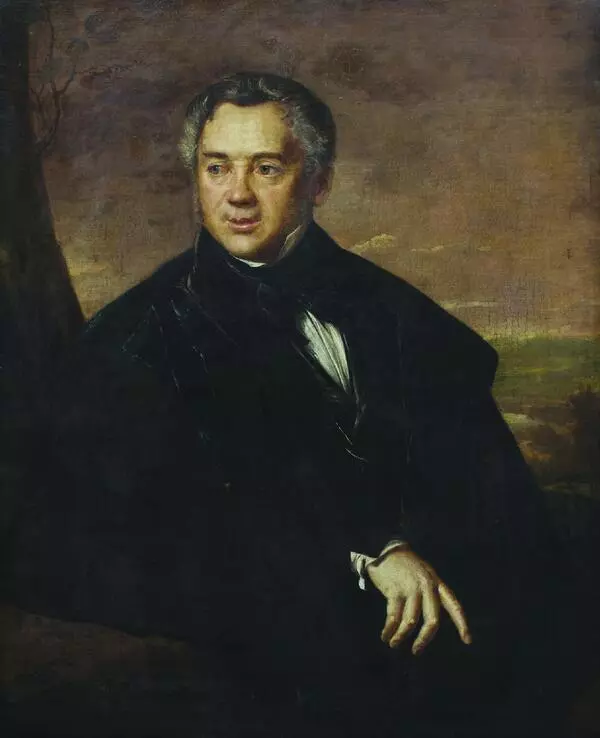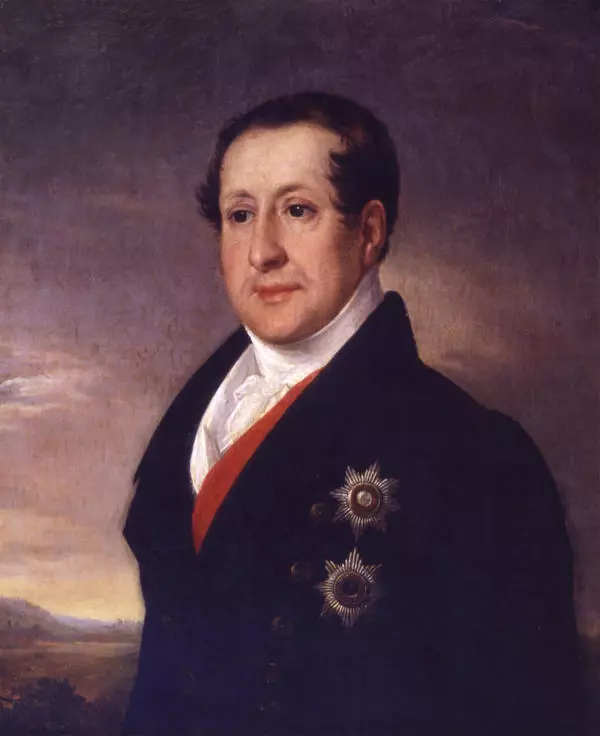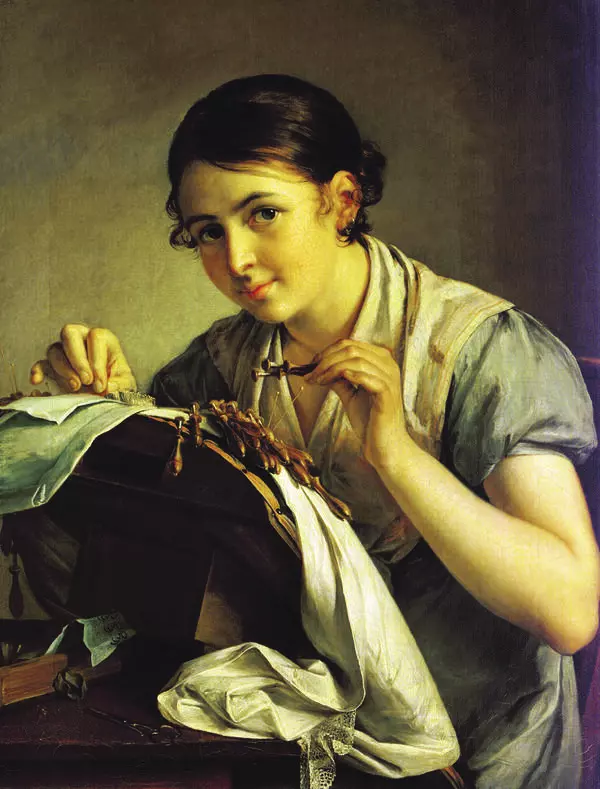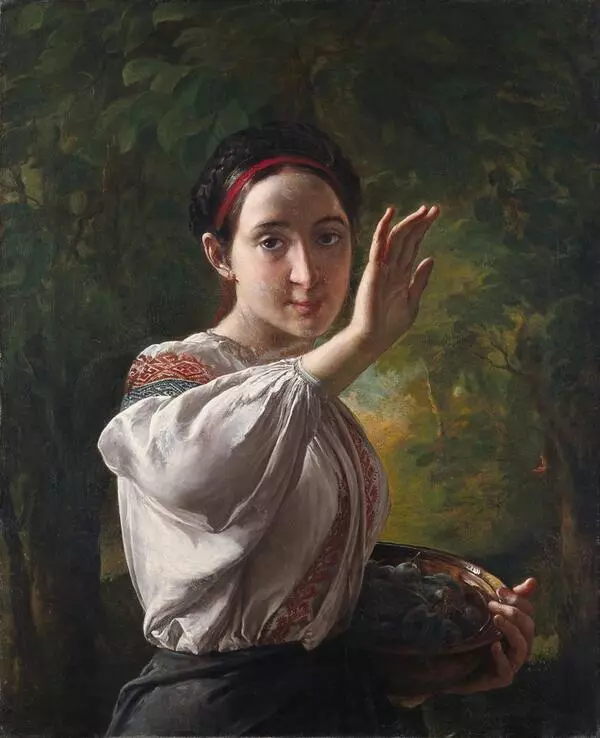Vasily Tropinin is a Russian painter, master of realistic and romantic portraits. He was born in the village of Karpovo, the Novgorod governorate in 1776. His parents were serfs of the Count Anton Minich. The Count freed Tropinin’s father in gratitude for the latter’s faithful service. The artist himself received freedom only at the age of 47, when he was already a celebrated painter.
Tropinin painted a lot since childhood, but those around him did not notice his artistic talent. He studied at the Public School in Novgorod and returned to Karpovo, which at that time belonged to the Count Irakli Morkov. In the 1790s, the Count sent Tropinin to study confectionery business in St. Petersburg.
In St. Petersburg, Tropinin began to attend the Imperial Academy of Arts in his leisure time, where he copied the engravings and studied the anatomy. Irakli Morkov’s cousin Alexey assigned Tropinin to the Academy of Arts paying for his studies, and from 1799 Tropinin became a student in the studio of portrait painter Stepan Shchukin. In 1804, the painter presented his debut painting “Boy Grieving for a Dead Bird”, which was highly appreciated at the exhibition by the critics. However, he did not finish his studies — the Count summoned him back to the estate.
Tropinin resumed painting only after the Patriotic War of 1812. During this period, he painted portraits of many noble Muscovites, including the family portrait of Counts Morkov and the portraits of the writers Ivan Dmitriev and Nikolai Karamzin. Tropinin also painted rural life, in particular, in the paintings “Wedding in Kukavka”, “Boy with a Pipe”, “Girl with a Spinning Wheel”. In 1823, after repeated requests from the admirers of the artist’s work, the Count Morkov signed the papers and set the painter free.
Tropinin painted ‘Portrait of Merchant P. I. Sorokoumovsky’, that is on display in the museum exhibition, in 1851. The artist used to depict his models in their familiar surroundings and in harmony with themselves. Therefore, the hereditary honorary citizen of Moscow, the founder of the dynasty of ‘fur kings’ Pyotr Sorokoumovsky is portrayed sitting in his workshop. He holds business papers, and by depicting furs in the background, Tropinin emphasized the status of his sitter who belonged to the affluent merchant class.
The color palette of the painting is restrained, it is dominated by black and brown colors. Tropinin featured numerous details that tell about the life and personality of the sitter — expensive wooden furniture, well-groomed white hands, a medal hanging on a ribbon around the merchant’s neck.
Several portraits of Sorokoumovsky, created by Tropinin, have been preserved. They are remarkable for the portrait likeness and the attempt to highlight the best qualities of the merchant’s character: accuracy, restraint and dignity.
Tropinin painted a lot since childhood, but those around him did not notice his artistic talent. He studied at the Public School in Novgorod and returned to Karpovo, which at that time belonged to the Count Irakli Morkov. In the 1790s, the Count sent Tropinin to study confectionery business in St. Petersburg.
In St. Petersburg, Tropinin began to attend the Imperial Academy of Arts in his leisure time, where he copied the engravings and studied the anatomy. Irakli Morkov’s cousin Alexey assigned Tropinin to the Academy of Arts paying for his studies, and from 1799 Tropinin became a student in the studio of portrait painter Stepan Shchukin. In 1804, the painter presented his debut painting “Boy Grieving for a Dead Bird”, which was highly appreciated at the exhibition by the critics. However, he did not finish his studies — the Count summoned him back to the estate.
Tropinin resumed painting only after the Patriotic War of 1812. During this period, he painted portraits of many noble Muscovites, including the family portrait of Counts Morkov and the portraits of the writers Ivan Dmitriev and Nikolai Karamzin. Tropinin also painted rural life, in particular, in the paintings “Wedding in Kukavka”, “Boy with a Pipe”, “Girl with a Spinning Wheel”. In 1823, after repeated requests from the admirers of the artist’s work, the Count Morkov signed the papers and set the painter free.
Tropinin painted ‘Portrait of Merchant P. I. Sorokoumovsky’, that is on display in the museum exhibition, in 1851. The artist used to depict his models in their familiar surroundings and in harmony with themselves. Therefore, the hereditary honorary citizen of Moscow, the founder of the dynasty of ‘fur kings’ Pyotr Sorokoumovsky is portrayed sitting in his workshop. He holds business papers, and by depicting furs in the background, Tropinin emphasized the status of his sitter who belonged to the affluent merchant class.
The color palette of the painting is restrained, it is dominated by black and brown colors. Tropinin featured numerous details that tell about the life and personality of the sitter — expensive wooden furniture, well-groomed white hands, a medal hanging on a ribbon around the merchant’s neck.
Several portraits of Sorokoumovsky, created by Tropinin, have been preserved. They are remarkable for the portrait likeness and the attempt to highlight the best qualities of the merchant’s character: accuracy, restraint and dignity.

